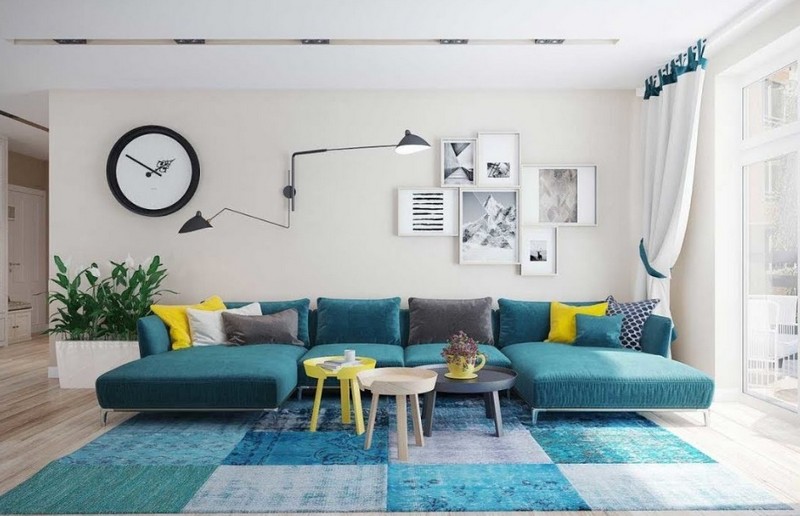Turquoise sofa is getting popular nowadays because it is able to bring a calm, fresh, and comforting atmosphere to the room at a house. Turquoise is also known as an aquamarine color because this color is a combination of green and blue. A turquoise sofa is suitable to be placed in a living room with any interior designs, especially a modern minimalist one. Do you get confused about combining this sofa with other furniture? Here are some ideas to design the rooms at your house with a turquoise sofa.
Clean and Bright Living Room
Do you want to make your living room looks more spacious and brighter? Dominate your living room with white and combine it with the greenish blue sofa. From the living room floor, ceiling, and wall, have them in all white. Then, place the turquoise sofa across or against a big glass window so that your living room looks even more spacious. The big glass window will allow the natural sunlight to come into your living room. So, it will look brighter combined with the white walls and floors. This idea will also make your living room looks clean.
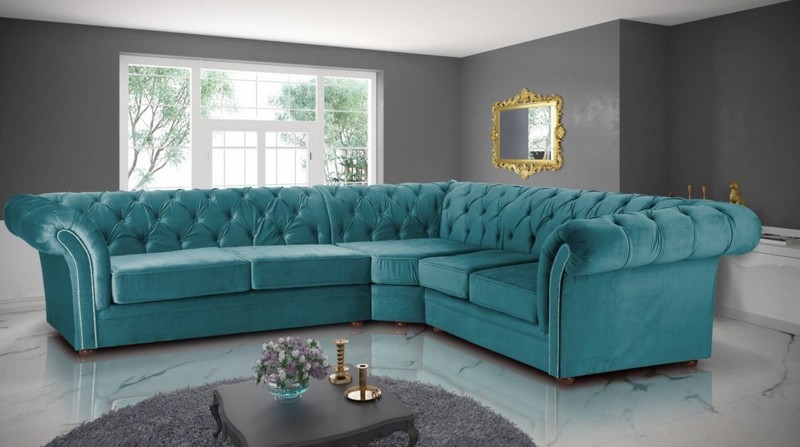
All Turquoise Living Room
There is nothing wrong to apply turquoise to most elements in your living room. From the sofa, walls, and rug. But if you want to add other colors to your living room, you are able to choose a white rug with a simple pattern. Place a green table lamp to be combined with the turquoise sofa and add green pillows on the sofa. Do not forget to hang photo frames, paintings, or other wall decorations so that the walls in your living room do not look boring and empty.
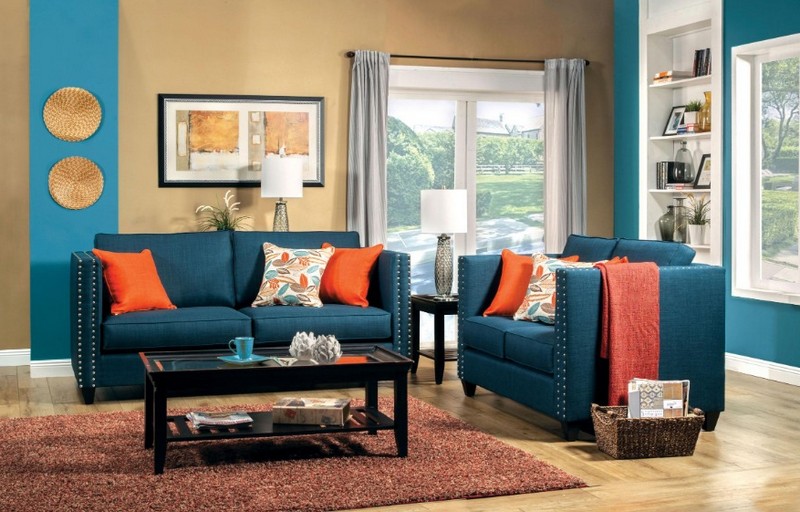
Sweet and Pretty Bedroom
A sofa with a turquoise color is not only suitable to be applied in a living room but also in a bedroom. Combine the sofa with wooden walls and floors in your bedroom. This combination will bring a cozy and natural atmosphere to your bedroom with a little bit of touch of country style. Add a black bed in order to balance the colors in the bedroom. Or, you are able to combine the turquoise sofa with a turquoise bed cover in order to create a harmony. Add a yellow carpet under the sofa. This combination of various colors will make your bedroom looks stylish, modern, and fresh as well.
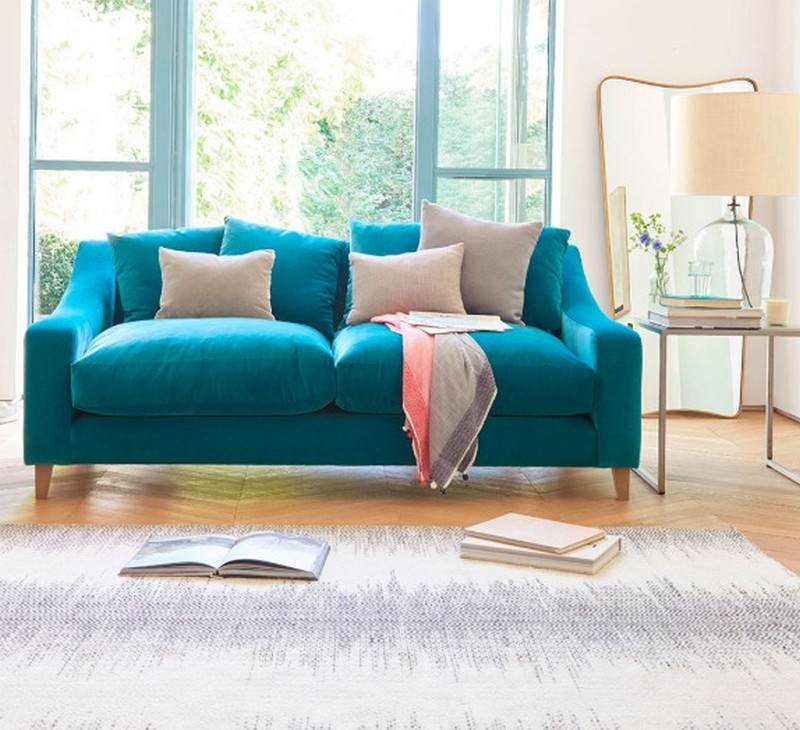
Natural Bedroom
For you who love nature, this idea is suitable for you. Surround your bed with wooden framed large glass windows. Choose wooden floor so that it matches with the wooden window frames. Add a grey rug and turquoise single sofa. The turquoise single sofa is able to be the point of interest that can refresh your bedroom. It can also the place for you to get relaxed while enjoying the outside view through the large glass windows. This idea is perfect if your bedroom is located near a backyard or garden. Are you interested to try this design idea with a turquoise sofa?
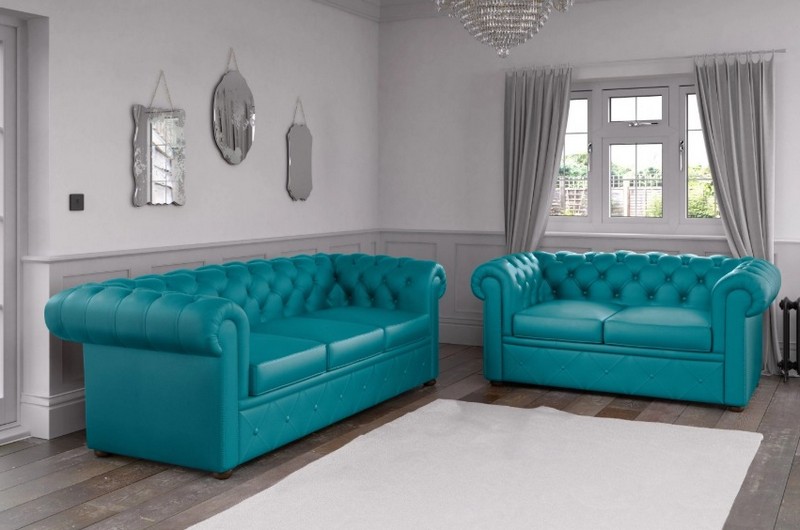
What is the color of turquoise?
Turquoise is a vibrant combination of blue and green, bringing to mind the peaceful and alluring qualities of clear, shallow tropical waters. This specific hue is notably bright and transparent, giving off a refreshing and light ambiance.
Typically described as a medium to light shade of blue-green, turquoise resembles the clear waters of the tropics and is esteemed for its serene, energizing, and timeless nature, making it a suitable choice for many applications. The color can vary from a pale aqua to a deep teal, depending on the balance between blue and green.
Turquoise is an intriguing color named after the gemstone of the same name, recognized for its unique and lively shade. In terms of color theory, turquoise falls between blue and green, providing a rejuvenating and soothing visual allure that has made it popular in art, design, and fashion.
How to Create Turquoise
To produce turquoise, blend blue and green together. The exact proportions may differ depending on the desired hue. To achieve a balanced turquoise, use equal parts of blue and green. Adding more blue will result in a cooler shade, while adding more green will produce a warmer tone.
What does turquoise look like on digital screens?
Turquoise is defined by the following color codes and values to ensure consistency across various digital platforms and devices.
HEX code: #40E0D0
Red is present at 25.1%, green at 87.8%, and blue at 81.6%.
When it comes to UI and UX design color choices, considering accessibility is crucial. Figma provides plugins in the Community to ensure that your designs comply with Web Content Accessibility Guidelines.
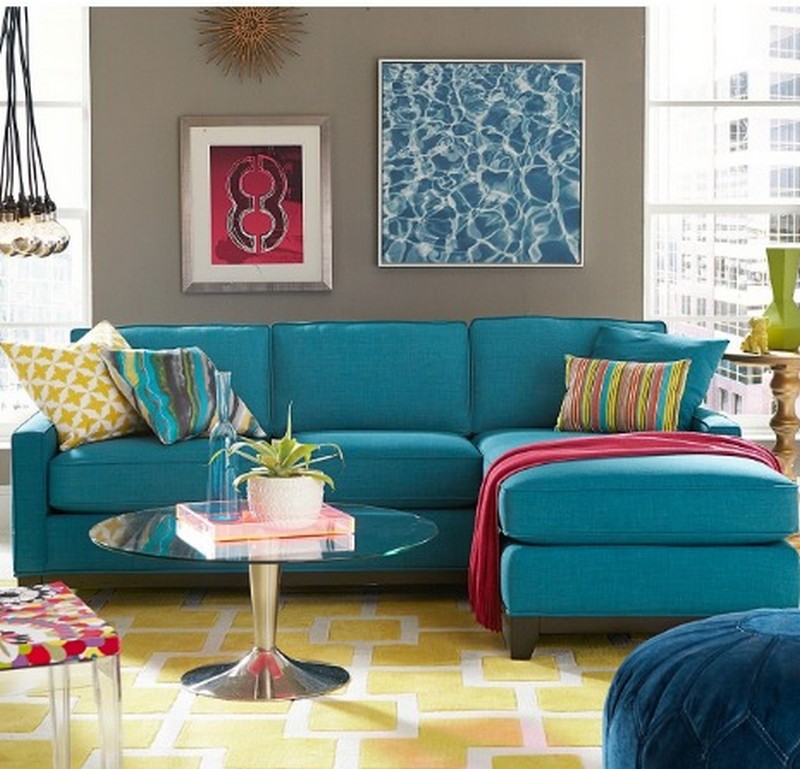
How to Effectively Use Turquoise in UI Design
Here are some ways to integrate turquoise into your designs:
Guide user interaction. The vividness of turquoise attracts attention to important elements such as CTA buttons or specific content sections.
Evoke a sense of refreshment and clarity. Turquoise can bring about a clean and refreshing sensation, making it an excellent color for websites or apps related to travel, nature, or technology.
Make a lasting impression. If your brand aligns with the positive associations of turquoise, such as trust, creativity, or tranquility, it can be the ideal choice for your logo, color scheme, or overall aesthetic.
Bear in mind that the meaning of color can vary from one culture to another and can change over time. If you are designing for a global audience, research the color considerations specific to the regions you are targeting.
What Does Turquoise Symbolize?
Turquoise symbolizes wealth, status, and beauty. In ancient Egypt, it was linked to the sky, love, and fertility, associated with the goddess Hathor. The Aztecs associated turquoise with water and creation, while Indigenous tribes of North America considered it a talisman of good fortune and communication.
Psychologically, turquoise combines the calming effects of blue with the refreshing qualities of green, promoting relaxation and serenity. Its green undertones suggest creativity and renewal, evoking growth and fresh ideas.
Tranquil and Calming: Often linked with the peacefulness of tropical waters, turquoise elicits sensations of tranquility and serenity.
Healing and Safeguarding: Many societies regard turquoise as a safeguarding gemstone that facilitates recovery, repels negative forces, and fosters overall wellness.
Creativity and Emotional Balance: The combination of blue and green in turquoise is said to foster creativity and emotional balance, making it a favorite among artists and healers.
To sum up, turquoise is a versatile and beautiful color with a wide range of shades, from light and airy aqua to deep and sophisticated teal. Creating it involves blending blue and green, and its complementary color, coral, provides a vibrant contrast. Turquoise embodies tranquility, protection, and ingenuity, making it a cherished choice across various uses, from artistic expression and design to personal embellishment.
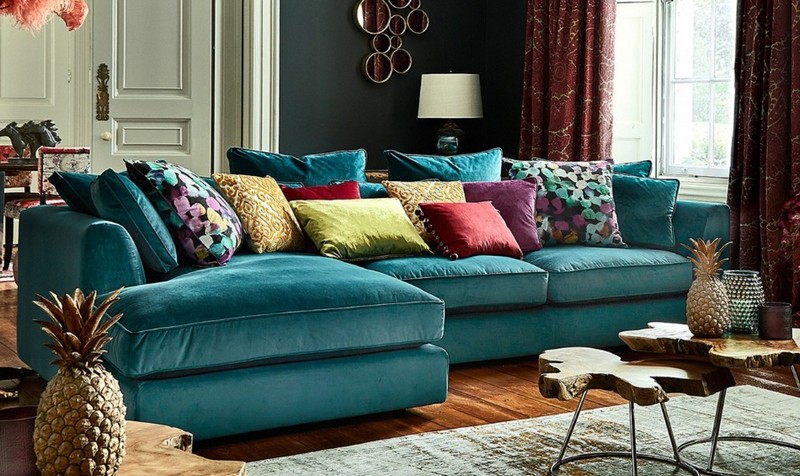
What Is the History of Turquoise?
The history of the turquoise gem spans various ancient civilizations, including Egypt, Persia, China, and the Aztecs. In Greece, it was called “callais,” and the Aztecs referred to it as “chalchihuitl.”
The modern term “turquoise” derives from the French word “turquois,” meaning “Turkish,” in reference to the gemstone’s passage through the Ottoman Empire to Europe. By the late 16th century, the term “turquoise” had expanded beyond the gemstone to also encompass the distinct blue-green color that characterizes it.
Ideas for Turquoise Sofa Living Rooms
Are you looking to update your living room with a vibrant new look? A striking and beautiful turquoise sofa can completely change the look and feel of your space. In this article, I will share a range of inspiring ideas for decorating living rooms to complement a stunning turquoise couch.
From harmonizing color schemes to different stylistic approaches, you will find innovative ways to create a cohesive and attention-grabbing design around this striking furniture piece. With the right accents and furnishings, the bright pops of turquoise can elevate your living room from dull to fantastic.
Whether you lean towards an assorted, bohemian ambiance or a more sophisticated coastal aesthetic, a turquoise couch has the potential to function as a striking centerpiece. Keep reading for advice, recommendations, and motivation to create a living room that you will thoroughly enjoy relaxing in!
Color Schemes for Turquoise Sofas
These are some colors that pair well with a turquoise sofa:
White – A clean, bright white helps make the turquoise stand out. White walls, rugs, pillows, and accessories offer a fresh, beachy vibe.
Sand or beige – Earthy neutrals such as sand, beige, or tan complement the blue-green turquoise nicely. These warm neutrals provide subtle contrast.
Yellow – From vibrant brights to muted mustard tones, various shades of yellow complement turquoise beautifully. These colors create a cheerful, sunny atmosphere.
Coral – Vibrant coral and orangey reds create a bold color combination with turquoise. The look is fun and tropical.
Navy – Darker blues like navy or indigo make turquoise appear more vivid. The classic nautical color combination is elegant and stylish.
Greens – Light greens like sage or lime add a natural accent to turquoise. Darker greens such as emerald or forest green provide an earthy contrast.
Greys – Cool greys in various shades, from charcoal to silver, nicely balance a bright turquoise couch.
The key is to choose colors in the same color family for a coherent look. Accent with black, white, or natural wood tones for a cohesive style. Have fun mixing and matching hues with your turquoise sofa!
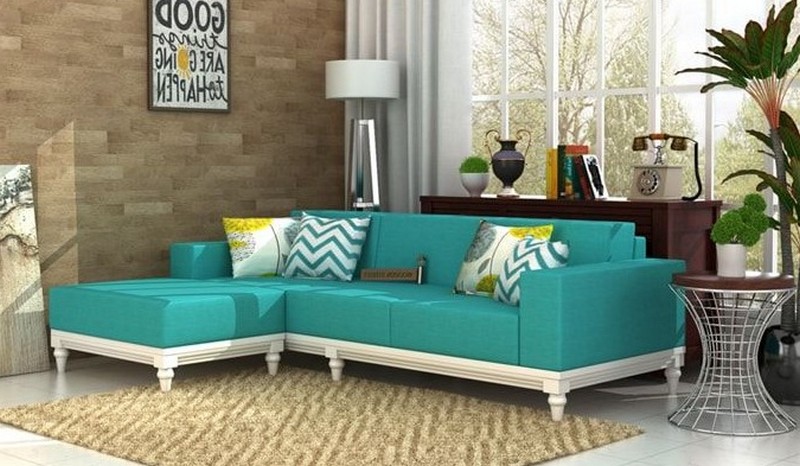
Living Room with Turquoise Sofa Walls
What wall colors complement a turquoise sofa? White and beige walls work well in living rooms with turquoise sofas!
Below are additional wall colors that would complement a turquoise sofa:
White – A bright white shade will make the turquoise pop and create a fresh, beachy ambiance. It’s an excellent clean backdrop.
Warm neutrals such as beige, sand, or tan nicely complement the blue tones and help the sofa stand out.
Light gray – A light gray wall color provides subtle contrast and allows the vivid turquoise to be the focal point.
Deeper blues such as navy or dark blue balance out the brightness of the turquoise.
Robin’s egg blue – Lighter blues in the same color family maintain a cohesive and calming look.
Coral – Vibrant coral walls create a lively, tropical combination with the blue-green turquoise.
An earthy, sage green wall color, such as moss green, looks natural and harmonious alongside the turquoise sofa.
Yellow – From light buttery yellows to deep mustard tones, yellow walls create a cheerful atmosphere.
When choosing a wall color, consider the overall style you want for the space. Neutrals recede to highlight the sofa, while bold colors highlight it. Have fun and choose a shade that excites you!
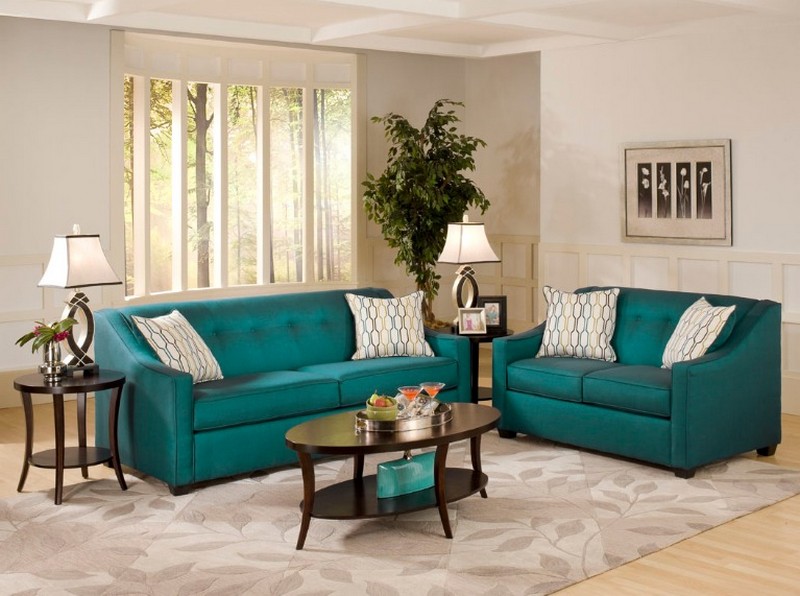
Find the Right Turquoise Sofa for You
Turquoise sofas are vibrant and lively, but they can also create a soothing ambiance based on their pairings. They are a centerpiece in many rooms and also a great place to relax and unwind. Depending on the desired look, they can be paired with bright or subtle colors, and they come in various shapes and sizes.
Why is turquoise a great color for a sofa?
Turquoise is a blend of blue and green, giving it a calming and natural ambiance. Blue symbolizes the sky and sea, while green evokes images of forests and tranquil meadows. At the same time, turquoise is also a bright color that adds liveliness to a space. These effects blend seamlessly in a turquoise sofa. Ultimately, your living room is your sanctuary, where you want to feel calm and relaxed when you return home. However, you also want it to have a splash of color. This brings an extra energy for social gatherings with friends and cozy evenings with your family.
How to arrange decor around a turquoise sofa
A turquoise sofa complements modern and contemporary interior design, making a bold statement. Placing the sofa near a window or mirror can enhance the room’s brightness by bringing out the natural liveliness of the color turquoise. For a more minimalistic look, consider pairing it with simple paintings and monochromatic decor. Alternatively, to help the turquoise sofa blend in, offset it with vibrant colors and patterns in rugs, cushions, and wall art. Many individuals also enjoy pairing turquoise sofas with 1950s decor to create a stylish retro vibe in the room.
How to design around a turquoise sofa
Turquoise sofas coordinate well with cushions and pillows in either complementary or matching colors. For contrast, consider using orange or yellow, while for a softer look, try gray, green, or blue. Adding a blanket can contribute to an elegant look. In general, a minimalist approach works best for styling a turquoise sofa. One benefit of the turquoise sofas featured on this page is their versatility in creating different room layouts, ranging from corner sofas to standard sofas and more, enabling you to create the space you’ve always envisioned.
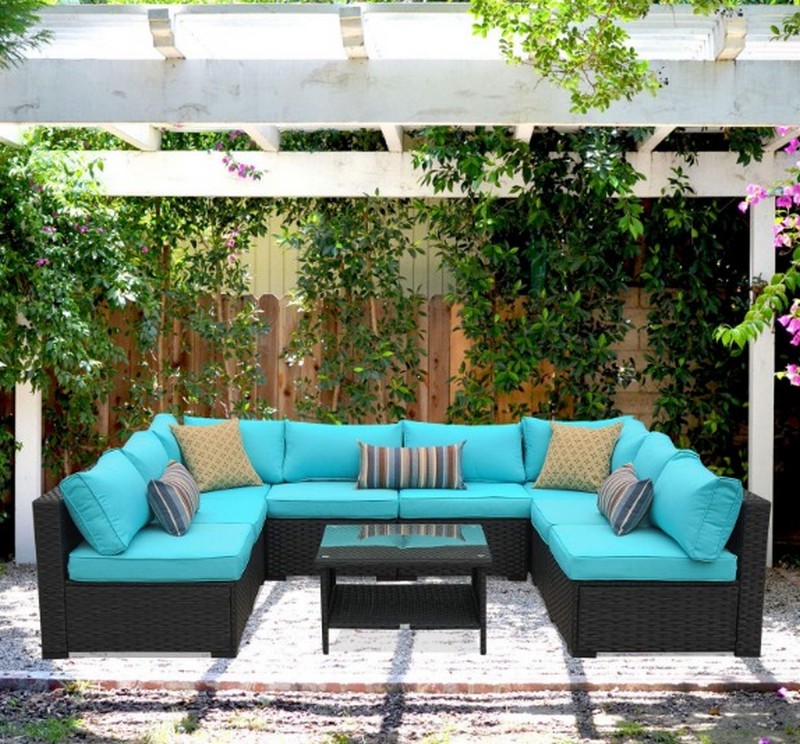
Turquoise sofas are available in various sizes
Depending on the size of your room and the ambiance you wish to achieve, you have the option to select a turquoise sofa that suits your needs. This collection includes smaller two-seat sofas and three-seat sofas, as well as larger four-seat sofas and five-seat sofas. The choice depends on the atmosphere you are aiming for and the space you have available.
Which colors complement a turquoise sofa?
For a more subdued look, neutral tones such as gray or tan can help balance the boldness of a turquoise sofa. On the other hand, bolder colors like green, pink, or yellow can create a contrasting effect while also establishing a soothing atmosphere. Read on for more guidance on selecting a color scheme that aligns with your vision.
What color palette complements turquoise sofas?
Turquoise sofas offer the flexibility to create a variety of room styles. White decor accentuates the presence of the sofa, while shades of blue allow it to blend in and create a more relaxed ambiance. Neutral colors such as grays, pastels, tans, and wood tones can also contribute to a soothing atmosphere. However, selecting a very light neutral color, such as cream, may create an overly intense contrast with the turquoise sofa. Bright colors like orange can create a cool, tropical theme, offering appropriate contrasts.
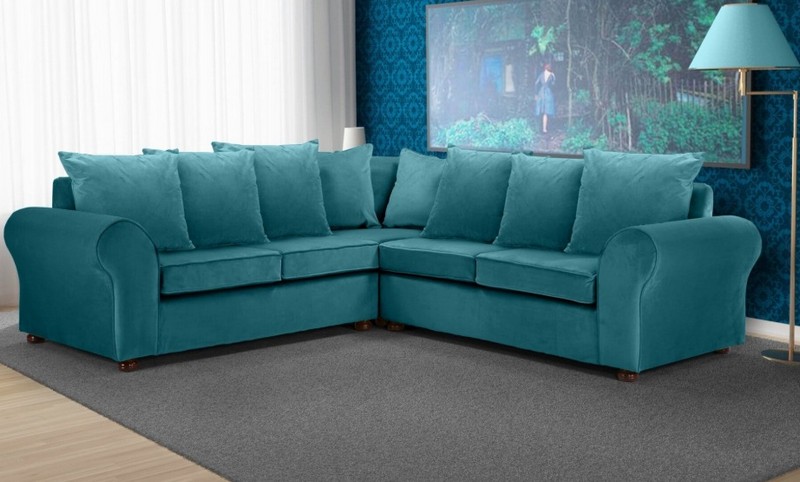
Which wall colors pair well with a turquoise sofa?
Neutral wall colors like gray and beige complement turquoise sofas nicely. Gray provides a strong contrast while also emitting a cozy atmosphere. Beige can create a sense of spaciousness and light in the room, drawing attention to the sofa. Colors like pink and yellow can infuse the space with vibrancy, imparting a playful and youthful appearance. Yellow walls, in particular, add warmth, while orange walls create a pleasing contrast with the sofa, especially when combined with wooden decor. For a natural and refreshing ambiance, consider trying various shades of blue on the walls in combination with the turquoise sofa. The only color to possibly avoid is red, as certain shades may contrast poorly with turquoise.
What are the potential uses of turquoise in interior design?
Incorporating turquoise into interior design can establish a calming and revitalizing ambiance, making it an ideal choice for bedrooms, bathrooms, and living rooms. Selecting a particular tone of turquoise allows for the development of a refreshing or calming background, depending on the intended outcome.
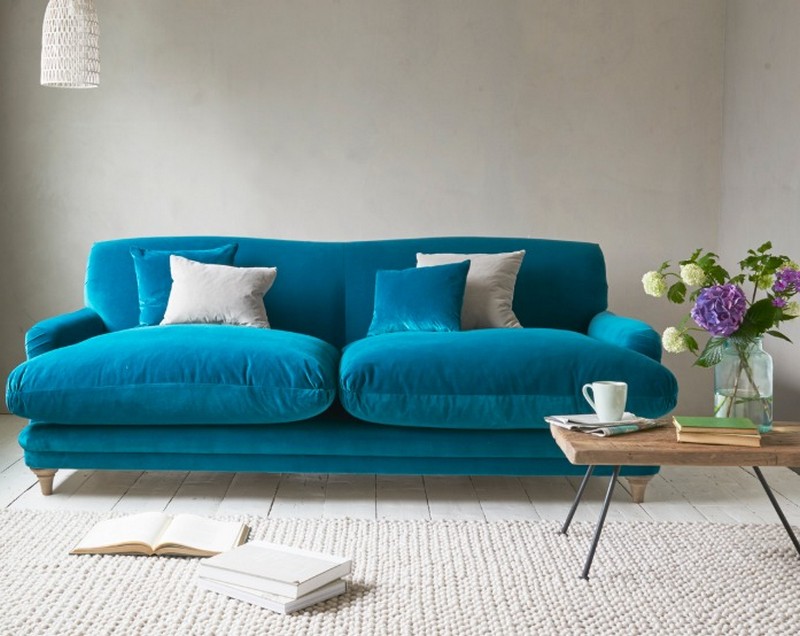
Why is turquoise popular in branding?
Turquoise communicates freshness, creativity, and trustworthiness, which explains its popularity in branding within the wellness, travel, and tech industries. It stands out without being overpowering, giving logos and interfaces a modern and approachable appearance.
How does turquoise impact the mood of a room?
Turquoise can evoke feelings of tranquility and equilibrium. Depending on the shade, it can make a room feel more spacious and airy (cool shades) or cozy and inviting (warm shades).
Is turquoise a suitable color for fashion?
Yes, turquoise is versatile in fashion, adding a vibrant touch that can be sophisticated and playful, suitable for both casual and formal wear, and flattering on various skin tones.
